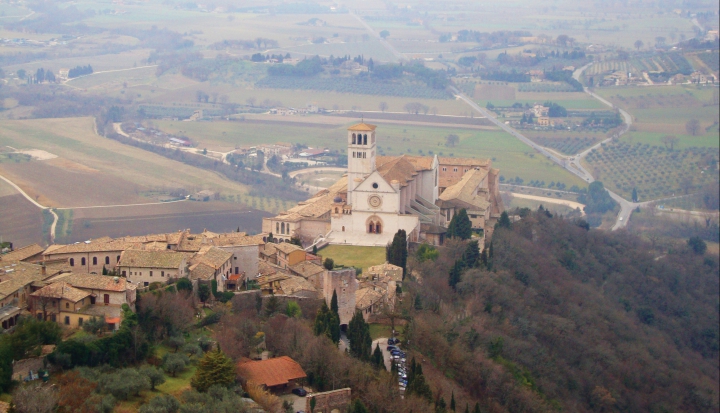A few years ago, on an incongruously cushy tour bus with plentiful opportunities for shopping, I made a pilgrimage to Assisi. We had Mass every day and visited the sites where St. Francis lived. I chose to enter into the experience, however, on what I hoped would be a deeper level.
I made the lonely climb up Mount Subasio outside Assisi and crawled into a cave, just as Francis and his brothers would have done. I ran through the woods at La Verna, where Francis received the wounds of Christ, finding crevasses in the mountain where I imagined the saint took refuge from the cold. I ate very little and spent no money, accepting only what was pro-vided as part of the trip. I prayed constantly. I felt that I connected with the life of St. Francis—and therefore with Christ, whom he sought to imitate. The trip changed my life.
For thousands of years, pilgrims have traveled to places brimming with spiritual value—for Christians, often places connected to the lives of Christ, Mary, or the saints. In the centuries before the airplane, the locomotive, and the automobile, traveling to these destinations usually meant a prolonged journey of anywhere from several weeks to a year. Travelers made the trips for many reasons: to ask for divine aid, to fulfill a religious obligation, or to venerate an important place or object.
Historically, the journey has been as important as the destination. Pilgrims took a lengthy break from their daily routines. They left their families and work environments, entering into a new community of people. In this new group, everyone was equal, no matter how much money or status they possessed.
Along the way, pilgrims had time to reflect on their lives back home. They were free to let go of their current situations and seek interior conversion. The destination became the center of their world, where they hoped to directly encounter God.
Pilgrims, by embarking on an exterior, physical journey, take an interior journey as well. Pilgrimages work because they address a fundamental human principle: We use our experiences of the perceivable created world to connect with the creator, whom we cannot see. This is the sacramental principle, and the foundation of our faith.
Pilgrimages continue to function as an important tool for spiritual growth. Modern methods of travel, however, have changed them.
Last summer, for example, I took my teenage son to Lourdes, France. While we didn’t spend a lengthy, arduous journey reflecting on our destination, we did have several months prior to our departure to anticipate what we would see and experience when we arrived.
But we were not, in fact, prepared. We cried as we watched scores of sick people being wheeled one at a time into the grotto where our Blessed Mother had appeared. We were moved by the faith of so many who had come to this sacred site expecting to experience God’s healing love.
During the candlelight rosary procession, as we prayed in different languages with thousands of other pilgrims, we encountered firsthand the global nature of our faith and our Catholic heritage; we felt an unforgettable sense of community. Everyone there was equal before God, no matter their physical or financial state of being.
You can make a pilgrimage without spending much money or traveling a great distance. For many years I have traveled to Trappist, Kentucky to be a guest of the Cistercian monks for a week, or sometimes just for a weekend. It’s always well worth the trip; the grounds as well as their inhabitants are inspiring. The monks have taught me that we all need to spend time in silence with the Lord, no matter where we are. The monastery wall is not to keep out the world but to provide a place of quiet. The cloistered religious, as professionals of asceticism and prayer, can teach us how we can better communicate with God.
Pilgrimages need not focus only on religious sites. The key is to recognize that you are in a sacred space where God’s nearness becomes much clearer to you. This happened last weekend as I sat by a waterfall during a family vacation to the Finger Lakes region of New York. Spellbound, I studied the intricate rock formations beneath the falling water. As I contemplated the vast and continuing work of creation, I needed no prompting to sense God’s power and imagination.
As human beings, we need physical experiences to help us better understand what we cannot come to know through our senses. We are on a journey back to God, and we are not yet fully at home. While made in the image of God, we must grow into his likeness by following the path of Christ. His journey led him to Jerusalem and through the cross into new life. Our journey leads us on the same path.
Pilgrimage journeys are physical enactments of this quest. We need to make difficult climbs, hide away in caves for moments of quiet prayer, and run with abandon to the God who always waits for us.
This article appeared in the April 2014 issue of U.S. Catholic (Vol. 79, No. 4, pages 47-48).
Image: Caitlyn Schmid












Add comment